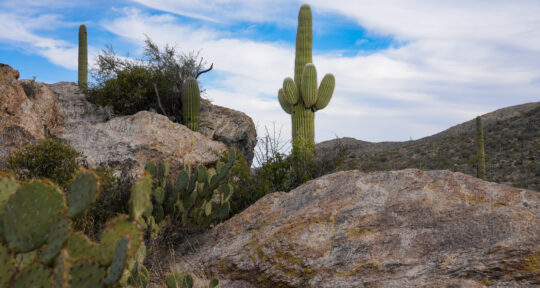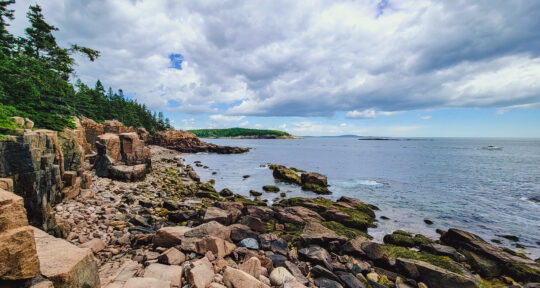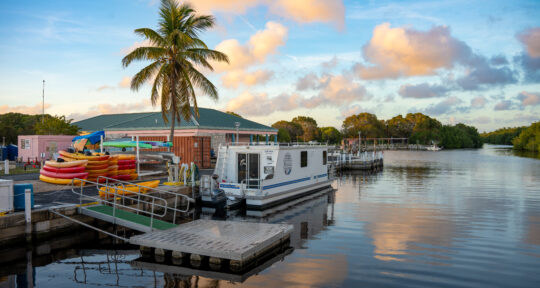Coming out of the Soda Pop’s Shop in Bryson City, North Carolina, I spot a gentleman with a well-trimmed, silver beard sitting in an Adirondack chair. I join him and the conversation comes easy once I ask about Great Smoky Mountains National Park.
Wayne Stone, it turns out, is a fly fisherman extraordinaire who has explored the Smokies for more than 50 years. I am mesmerized by the stories of his adventures with his 96-pound yellow lab, Bud Light. Stone proudly shows me a photo of his dog with a wild trout in his mouth.
When I ask about his favorite fishing spots or hiking trails within the park, he hesitates.
With more than 12 million annual visitors, the Great Smoky Mountains is the most-visited national park in the U.S., and I understand the urge to keep some of its hidden gems a secret. When I first visited, like many others, I began at the Oconaluftee Village, near Cherokee, and drove the scenic U.S. Route 441 over the mountain. A quick stop at Clingman’s Dome, the park’s highest point, and an afternoon in Cades Cove, near Gatlinburg, and I checked the park off my proverbial bucket list.
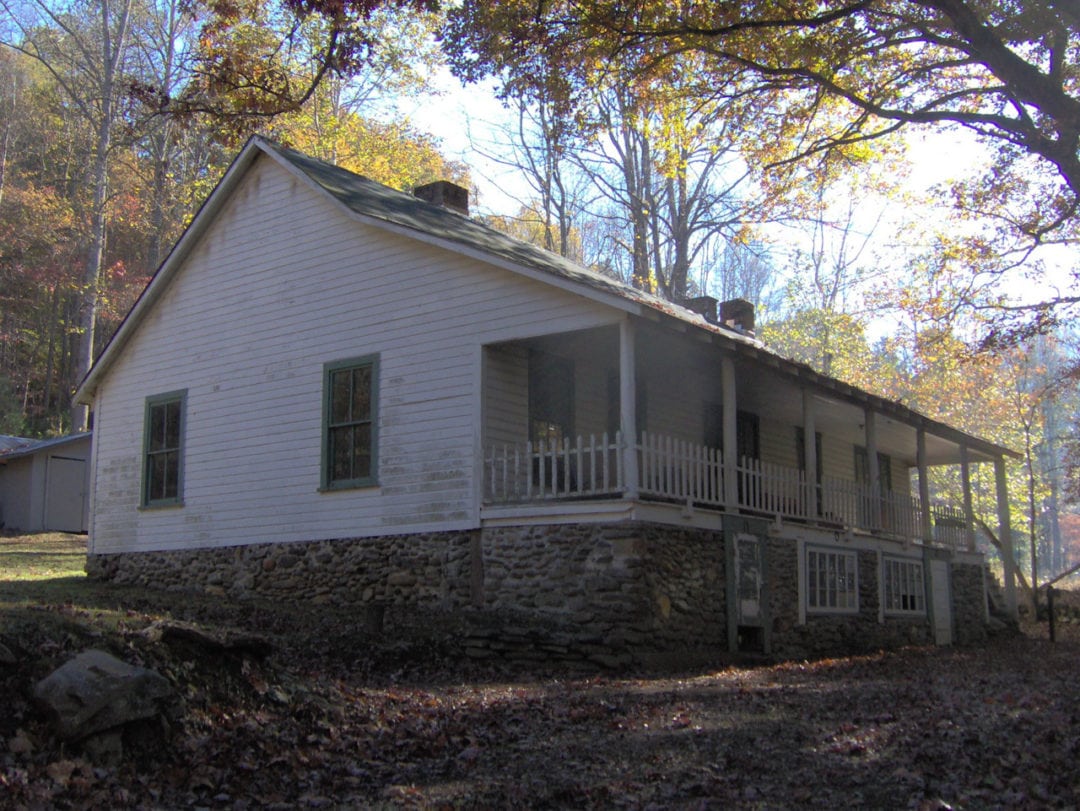
It took multiple visits to discover that the national park, encompassing the Smokies, is like an iceberg. By remaining in the most well-visited areas, I had only scratched the surface of what the park truly had to offer.
Ghost towns and the Road to Nowhere
When Ann Davis first conceived the idea of a national park in the southern Appalachian Mountains, not everyone was enthusiastic. Most of the Appalachian range was privately held and required the cooperation of both individuals and companies. By the late 1800s, the logging and mining industries had built thriving communities that resisted selling their land.
Creating the park took more than 17 years during the 1920s and ’30s, necessitating the purchase of more than 6,000 tracks of private land. Starting in 1933, the Civilian Conservation Corps began building roads and cutting trails. These efforts culminated in more than 800 miles of park trails.
The park’s ghost towns, which tell the story of its once-thriving communities, are some of the best places to see this protracted history first-hand.
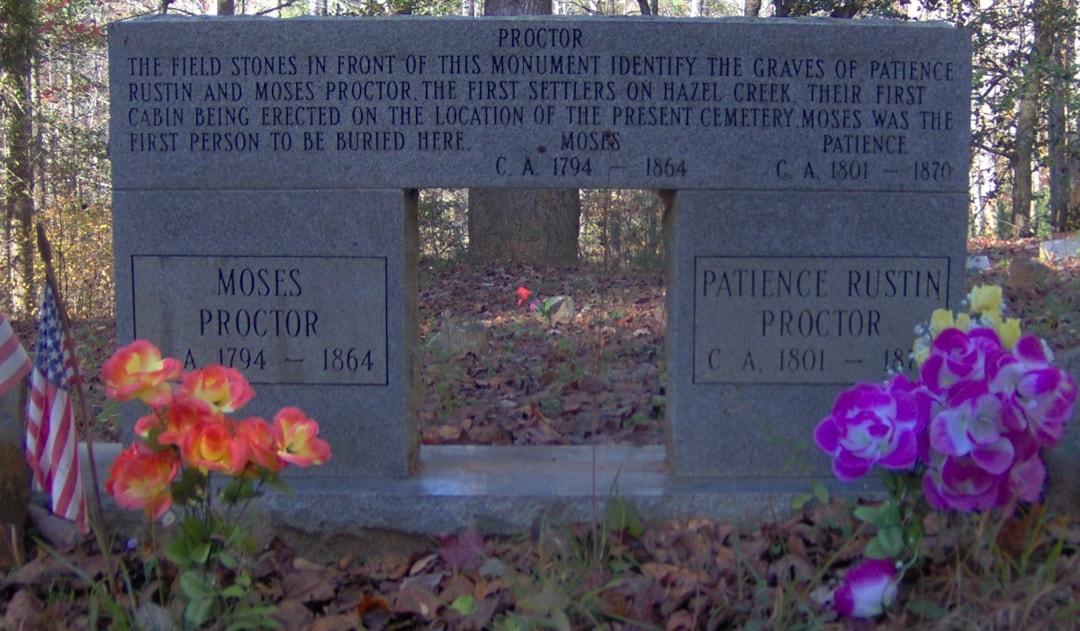
Elkmont is easy to reach and the most famous ghost town within the national park. Located outside of Gatlinburg, it includes 19 buildings, six of which have been fully restored. The town began as a logging community and transformed into a resort destination before becoming part of the park.
Exploring the lesser-known ghost town of Proctor, which met a similar fate, is more challenging. Located along the northern shores of Fontana Lake, at the southern end of the park, it is accessible only by boat or a 10-mile hike into the remote area. In its prime, it was home to 7,000 residents, supported by the Ritter Lumber Company. All that remains are a restored home converted into a park service building and the ruins of a lumber kiln.
While embarking on a 10-mile trek to see the lumber kiln ruins is not for me, crossing the scenic Fontana Lake into the isolated wilderness to hike and fish Proctor, Forney, and Hazel creeks is another matter. Arriving by boat (motorboats and kayaks are both welcome), I have the place to myself. Listening to songbirds chatter in the trees, I wander the hiking trails that wind through abandoned cemeteries left behind when the Tennessee Valley Authority built Fontana Dam and flooded the valley below. The chilly creek beds deliver up brook, brown, rainbow, and steelhead trout depending on the time of year and where I cast my line.
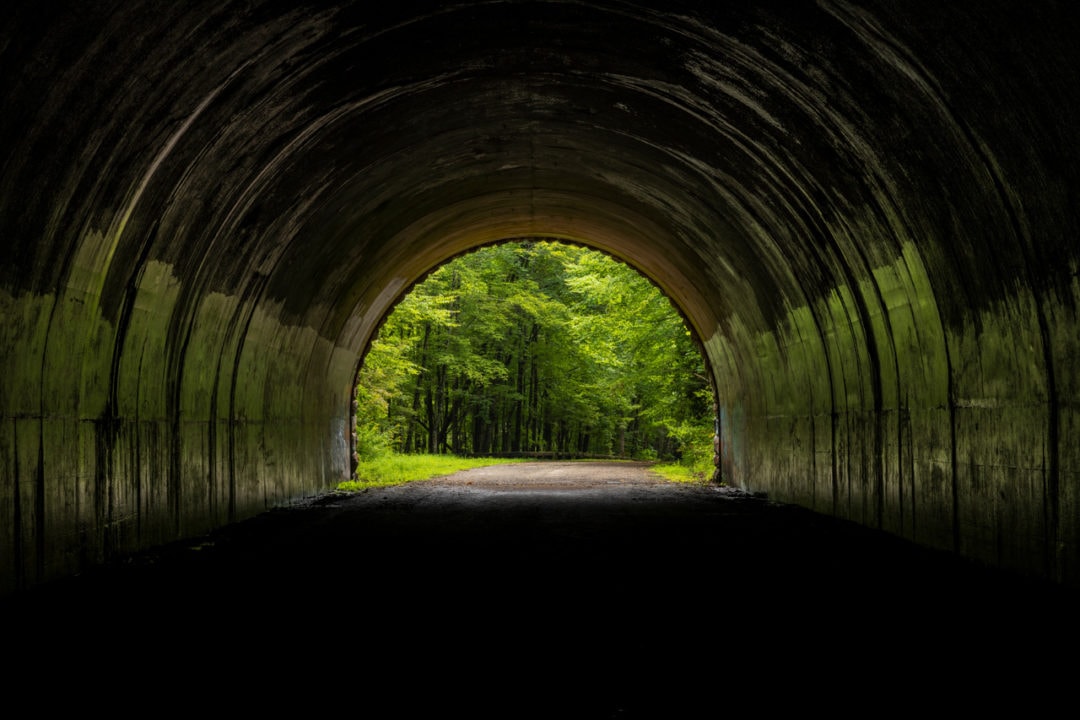
The creation of the Fontana Dam came with the commitment to build a road to the now landlocked Hazel Creek area, allowing the community access to family gravesites. Wayne Stone gathers gravestone data and images during his frequent hikes and has identified 33 remote graveyards in the Proctor area. After building seven miles of road, the federal government abandoned plans to finish the project, citing financial and environmental concerns.
Officially called Lakeview Drive, The Road to Nowhere ends in a tunnel, resembling the ones found along the nearby Blue Ridge Parkway. The leisurely drive delivers scenic overlooks of Fontana Lake and miles of hiking trails just beyond the tunnel.
Mother Nature at her finest
The Appalachian Mountains include a temperate rainforest throughout the Great Smoky Mountains National Park. Frequent rains bring between 60 and 85 inches of annual precipitation, producing lush forests and majestic waterfalls along the park’s hiking trails.
One of my favorite spots is just five minutes north of Bryson City. Deep Creek is easily accessible by car with camping, fishing, tubing, swimming, hiking, and three waterfalls clustered within close proximity. Trails also connect hikers to Clingman’s Dome for a multi-day hike along well-marked trails and established backcountry campsites.
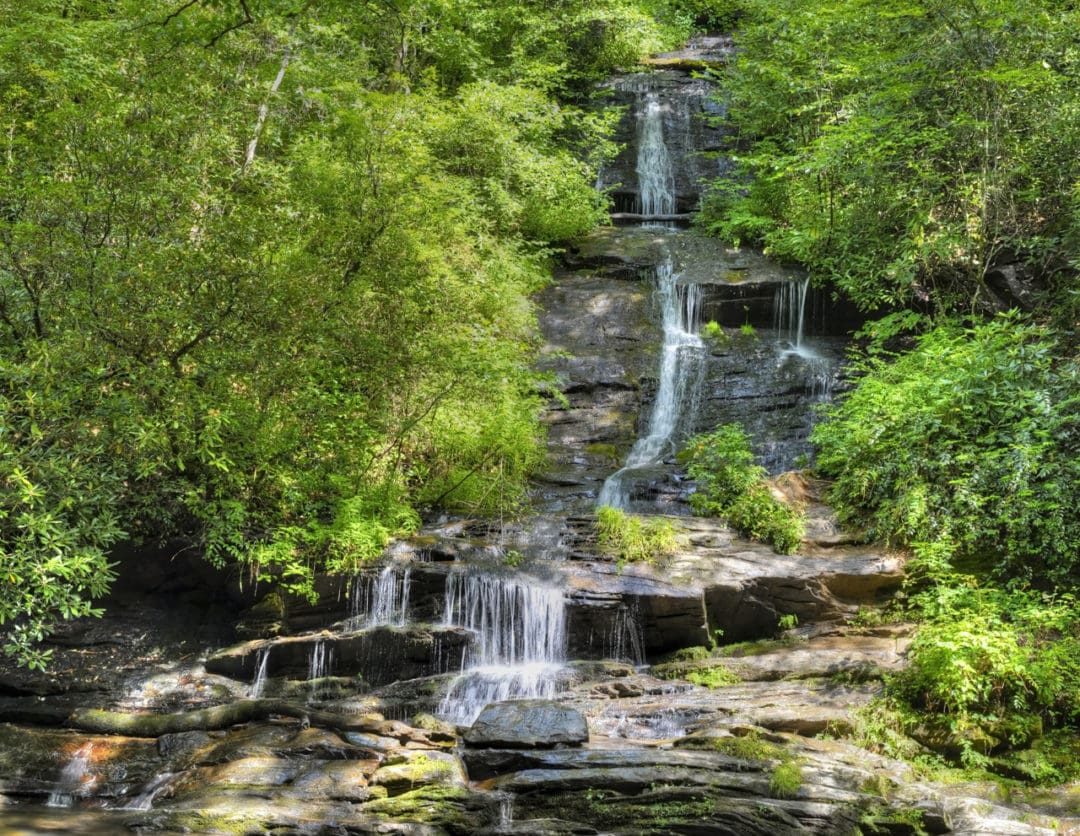
To delve into the Deep Creek Recreation Area, I take the waterfall loop trail starting with Juney Whank Falls. The path circles back to the main trail, leading to Indian Creek Falls about a mile further. The return trip passes Tom Branch Falls. During the summer months, I often end the day with a creekside picnic and a cool refreshing tubing run from Tom Branch Falls through the Deep Creek Campground.
The best fishing lies above the bridge, just past Tom Branch Falls. There’s also the option of continuing past Indian Creek Falls, up the mountainside, to reach Clingman’s Dome.
The Appalachian Trail (A.T.), one of the world’s most renowned hikes, covers more than 71 miles within the national park. “When you arrive at Clingman’s Dome, you can look down the mountain trail and think to yourself, only 2,000 more miles to go!” says George Ellison, an author and expert on the Great Smoky Mountains.
While I once had aspirations of hiking the entire A.T., I still enjoy a day or two in the backcountry. Starting at Newfound Gap or Clingman’s Dome, there are several multi-day hikes to choose from. Shuckstack Fire Tower offers some of the best panoramic views of the Smokies along the A.T. When I look out over the blue haze, with layers of mountains stretched out before me, I feel like the strenuous seven-mile round trip trek starting at the Fontana Dam, with an elevation gain of 2,120 feet, is worth it.
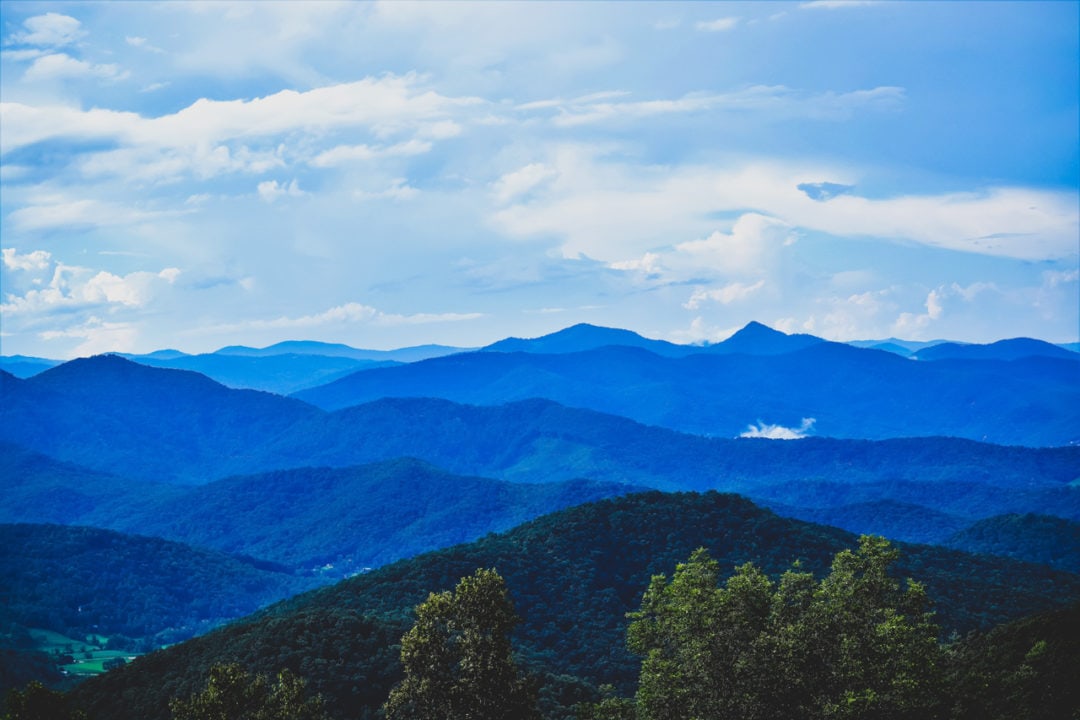
Historic structures and wildlife
With more than 90 preserved buildings and structures, the Great Smoky Mountains National Park provides a glimpse of what mountain life was like 100 years ago. It also has one of the best collections of old log buildings in the eastern United States. While Cades Cove and the Oconaluftee village get most of the traffic, the Cataloochee Valley, with its historic structures and wildlife, is a great alternative without the crowds. In the late afternoon, I have seen elk battling for dominance in the valley and toured restored homes and churches.
“The greatest love I’ve ever known is Mother Nature,” Stone says. “If you stop and listen long enough, she will speak to you.”
If you go
Great Smoky Mountains National Park is open year-round, but some locations within the park are currently closed due to COVID-19. Please check the National Park Service website for the most up-to-date information.

